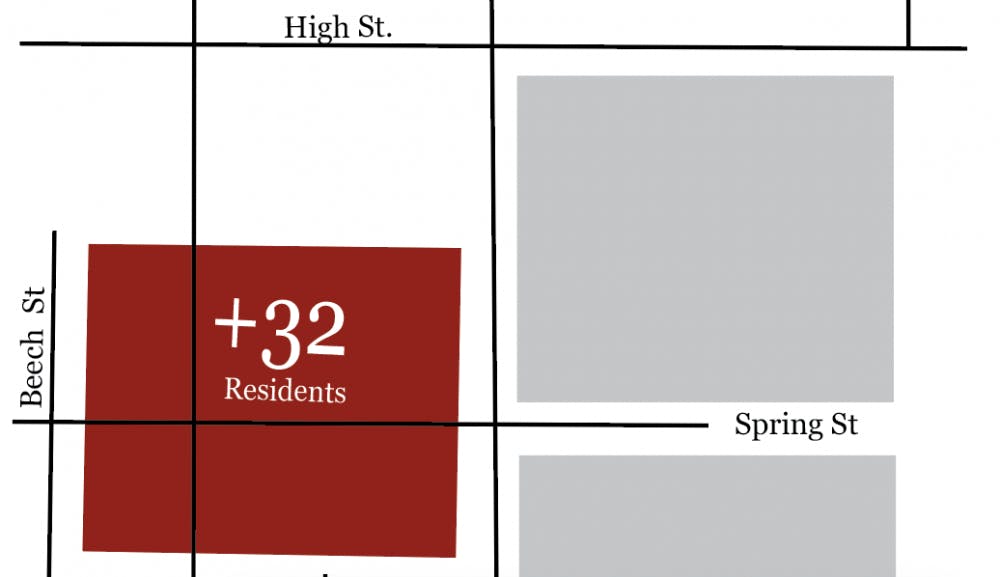[et_pb_section fb_built="1" _builder_version="3.0.47"][et_pb_row _builder_version="3.0.47" background_size="initial" background_position="top_left" background_repeat="repeat" _i="0" _address="0.0"][et_pb_column type="2_3" _builder_version="3.0.47" parallax="off" parallax_method="on"][et_pb_image src="http://miamistudent.net/wp-content/uploads/2017/09/infographic_zoningchanges.jpg" _builder_version="3.0.77"][/et_pb_image][/et_pb_column][et_pb_column type="1_3" _builder_version="3.0.47" parallax="off" parallax_method="on"][et_pb_text _builder_version="3.0.77" background_size="initial" background_position="top_left" background_repeat="repeat" _i="0" _address="0.0.1.0"]
City Council unanimously approved sweeping zoning changes to decrease living costs, increase housing availability and move student rentals closer to Miami's campus in Oxford's Mile Square.
The eight separate ordinances were first read on Tuesday, Sept. 5, and then approved on Sept. 19. In them, the Planning Commission and Director of Community Development Jung-Han Chen lay out a vision for an Oxford that allows high-density student rentals to cohabitate with the city's historic character.
The biggest changes come in density and occupational limits. Council decreased the required lot size and now allows use of accessory buildings -- any secondary building on a lot that is not connected to the primary residence -- as dwelling units.
The ordinances also commit two areas of Oxford -- see the map for more details -- that will be rezoned: one area is bordered by Tallawanda Road, Sycamore Street, Main Street and Vine Street; the other, central Mile Square, and is bordered by Campus Avenue, Church Street, Beech Street and Heather Lane.
In the rezoned areas, some residential districts have been modified to allow more families to live in the same home. In effect, these changes allow more students to live in a rental home.
Because the rezoned districts were chosen for being "ideal" for redevelopment while "respecting the historic character of the neighborhood", estimating the number of additional housing spaces -- and the actual change in cost -- is difficult.
The best way to tell is to wait and see. In voting for these ordinances, council effectively invited developers to revisit Oxford with new complexes.




